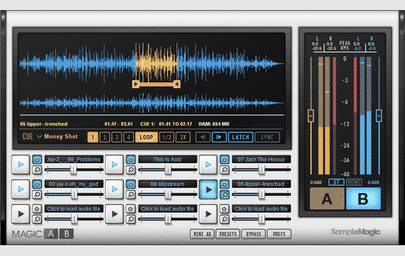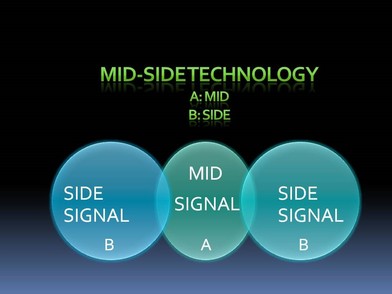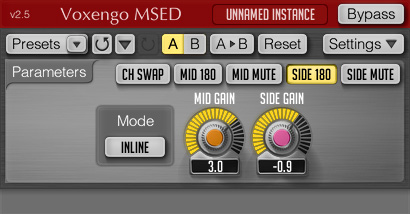|
In this blog, HowToLicenseYourMusic.com’s resident producer Gary Gray, based in Los Angeles, lists 3 excellent tools you can use immediately to get better sounding tracks and increase your chances for Music Licensing Success. Over to you Gary. . . Thanks Aaron! I know most people who spend time trying to improve their mixes for Music Licensing have limited time, so we’re going to get right into it: Here are three mixing tools that I have found invaluable in getting music licensing deals actually closed. ⦁ MAGIC AB Magic AB is a plug-in made by a company called Sample Magic that allows you to instantaneously compare your current mix or master to commercial recordings. You can load up to 9 commercial recordings into the plug-in. For details on how to use this plug-in (or any questions concerning this blog) feel free to email any of your questions to me at [email protected]). There are some incredible tips and tricks that I use while using the Magic AB Plug-In that I would more than happy to share. ⦁ Mid-Side Recording Techniques and Plug-Ins If you already fully understand what Mid-Side means and have successfully used this technique with two microphones during the recording process, and are familiar with mixing and/or mastering with Mid-Side plug-ins, congratulations! You can move on to #3. If you are not fully conversant with this technology, Mid-Side technology, techniques and plug-ins can open up a whole new world for you which can immediately make your tracks sound more like commercial tracks and increase your odds for licensing success. In fact, I devote two entire chapters of my 30 chapter book, “The Home Studio Bible” to just Mid-Side Technology, Techniques and Plug-Ins – Chapter 26 “Unraveling The Mystery and Unveiling The Secrets of Mid-Side Technology,” and Chapter 27 “A Summary of Mid-Side Technology and Techniques for the Home Studio Producer/Engineer.” Teaching the microphone technique itself would require much more than a single blog. But the good news is this, you don’t need to know a single thing about the recording techniques of Mid-Side technology in order to understand and immediately start using Mid-Side techniques for mixing. Using Mid-Side techniques, and even talking about Mid-Side technology is often shied away from for one simple reason. The name of this technology and technique is, in and of itself, extremely confusing and misleading! It’s unfortunate that this technology was not named correctly – describing what it actually is and what it actually does. Technically speaking, this technology and technique should be called: MIDDLE-SIDES or CENTER-SIDES. RATHER THAN MID-SIDE. Let me help you unravel this subject, as I do for all my interns and students, so that you don’t get caught in the confusing trap that many producers, engineers and musicians find themselves in regarding “Mid-Side” technology. First of all, as shown above – MID in this case does not refer to the same MID that we normally use in music production and audio engineering – namely Low, Mid, High: referring to EQ or frequencies, such as the mid frequencies. We are NOT talking about mid frequencies when we are using the term MID-SIDE. We are not talking about ANY frequencies when we talk about MID-SIDE. MID in the term MID-SIDE means THE MIDDLE, OR CENTER, OF THE SONIC PICTURE. It means precisely: The actual space between two speakers in a stereo set-up, and the mind’s perception of that center space. When you use the term SIDE in MID-SIDE Technology, you are actually referring to a plural – TWO SIDES, not one singular side. You can see in the illustration above what MID-SIDE really means visually. It means you can split the sonic picture of what you are mixing or mastering into two parts: A – The Middle or Center. The space between the two speakers in front of you. B – The Sides (PLURAL) – BOTH the Left AND Right SIDES of the stereo picture in front of you – literally the two spaces outside the speakers – both to your left and to your right. It’s important to understand that we are talking about something that you cannot divide or separate – the SIDES are not something you can “pan” to the left or to the right. The left and right SIDES in MID-SIDE are always equally strong, equally loud – BOTH the left and the right together – excluding the center or mid picture. If you sat in front of your speakers and pointed to each speaker, and then moved your arms outward to the left and the right, that would be the SIDES picture we are talking about. For instance, did you know that with MID-SIDE techniques, you can boost your Kick and Bass Low Frequencies in the MIDDLE – in the center space between the speakers, and cut the lows on the SIDES? This focuses the kick and bass, adding punch and clarity in your face, while taking the low frequencies out of the SIDES, taking away a muddy aspect of your mix, where you can focus nicely on things such as guitars, or synths or background vocals and get a really nice wide commercial sounding mix! AND – you can use MID-SIDE techniques on many things, such as reverbs, delays, parallel compression, side chaining – the list goes on and on. The more you experiment, the more you can discover techniques to use for your mixes. But it all comes down to understanding the exact meaning of the term MID-SIDE. Among other great plug-ins utilizing this technology is a plug-in many top pros use – Izotope Ozone. This can be used for mixing and/or mastering. If you’re on a tight budget, there are some really good free mid-side plug-ins available as well, such as the Voxengo MSED. ⦁ MUSIC THEORY AND THEORY WEBSITES
You might wonder why I’m listing Music Theory as a “tool” that you can use to improve your mixing and/or mastering. The more I produce and engineer, the more I mix and master, the more I teach and the more I learn – one thing becomes crystal clear. The more you understand about Music Theory, the better your mixing and mastering will be. In fact, that’s worth repeating: The more you understand Music Theory, the better your mixing and mastering will be. It is ALSO true that you don’t need to know everything about music theory to improve your mixing and mastering. So, don’t worry if you never went to school or if you don’t know a thing about music theory. You can STILL make a great living with music licensing if you don’t. What I’m pointing out here, is that you can do BETTER the more you know about music theory. I saw this happen in my own career, and I see it happen with every intern or student I’ve ever taught. If you want to be different and “break the Music Theory rules,” that’s totally ok. But you won’t even know when you’re breaking the rules if you don’t know what they are. Every student I teach learns more about music theory, no matter what else we work on. And when I listen to their mixes, it’s undeniable how much that knowledge helps. And this is true in every genre. And here’s some incredible news that can put some amazing tools right into your hands so that you can immediately increase your knowledge of music theory in such a way that your mixes and masters will improve starting right now. Here are some excellent websites you can use right now to immediately increase your knowledge and application of Music Theory: http://HookTheory.com http://mugglinworks.com/chordmaps/ http://www.berkleeshares.com/ Summary Knowledge and discipline will result in boosting your confidence in mixing and mastering – and it’s the confidence that will increase your odds for success. I’m all about increasing your confidence. That’s my passion and my labor of love in the music industry. Anything that cuts your confidence down, that lessens your drive and ambition, I am 100% against. If I see something that causes confusion, or someone spreading incorrect advice, I’m all over it. My personal mentors and teachers, such as Phil Collins, Ramnad Raghavan, Phil Ramone, Quincy Jones, and others have passed that passion and labor of love to me, and because of it – it’s only right that I pass it on to others. With just the three tools above, you can immediately improve your mixes (and/or masters) and increase your odds for music licensing success. Good Luck! And write to me and let me know if you have any questions and tell me about your successes. Gary Gray [email protected] Los Angeles, CA 13 December 2015
2 Comments
Leave a Reply. |
|
© 2024 By Aaron Davison.net



